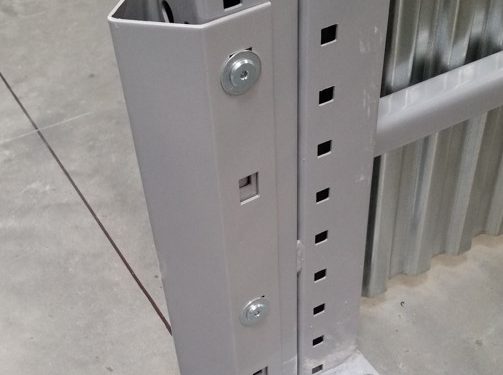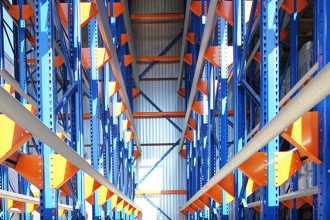Protecting Your Racking Investment

You’ve just purchased new racking—don’t leave anything to chance. Protect and inspect for a long-lasting product.
You’ve gone through the process of selecting the right racks for your operations and installation is scheduled. With a big investment, your next step is to make sure you can protect and maintain these new key components in your facility. You’ll want to protect against operator incidents that might damage the racking, as well as acts of nature, like fire or earthquakes. If unprotected, both types of incidents can lead to major safety issues, as well as product damage.
Your best approach will include the right protective accessories, and sticking to a regular maintenance routine.
When it comes to the equipment accessories, one of the key areas to protect is the bottom six inches of your racking. This is where most of the damage will occur, generally from sloppy or fast forklift maneuvering. Without the protection, the damage can include a dented frame or even a sheared off anchor, leaving your racks vulnerable to collapse. The solution here are upright protectors that provide a barrier and shield against the shock of impact.
Other vulnerable spots in your racking includes the end of your rails from 48 inches on down to the floor. The typical solution here is guardrails akin to what you’d see on the side of a highway but made for racks. These steel guardrails will usually be two or three rails, again serving to absorb the shock of a forklift impact.
Another key measure is emphasizing to your forklift operators the need to move slowly and deliberately within your facility and around racking, specifically. Slower speeds and careful operations will go a long way toward minimizing damage—and keeping employees safer, too.
You should also ensure you’re not overloading your racks beyond what they are designed to hold. Signage stating the maximum height and weight can serve as a good reminder to operators in the facility. If you are in a seismic zone, ensure your rack is ready for potential seismic activity.
After ensuring the right specifications are in place, along with the right protection for your racks, maintenance comes into play. Most manufacturers will suggest a cadence of once-a-month inspections, but too often this is an overlooked part of the equation and is left until there is damage and an audit to determine how to fix the issue. These days, many insurance companies will incentivize or even require that you take the time for scheduled maintenance, so be aware of your policy requirements and adhere to them.
Instead, plan to have in-house or third-party inspection on a regular basis. Checks should include a good torque on all bolts. It’s easy for the anchor bolts or bolts in structural racks, beams, frames and accessories to loosen over time, leaving your systems vulnerable. A monthly going over will prevent this from happening.


